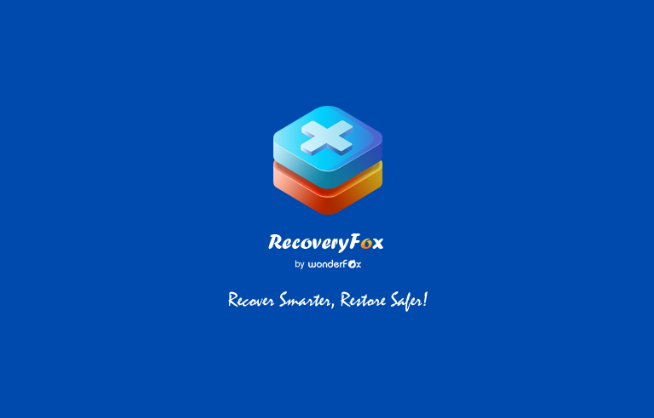How RecoveryFox AI Helps You Restore Lost Files
At RushRadar, we’re always exploring tools that enhance cybersecurity, improve data management, and help users safeguard their digital lives. One area that’s frequently overlooked—until a crisis hits—is file recovery. Whether it’s the result of accidental deletion, hardware failure, or a corrupted drive, losing important data can be disruptive, stressful, and in some cases, catastrophic.
While RecoveryFox AI is not a cloud-based tool, it complements cloud storage by helping users recover files stored locally that may have been lost or deleted. In that way, it works hand-in-hand with backup solutions to ensure better overall data security. In this article, we take a closer look at what RecoveryFox AI offers, how it works, and why it could be a valuable addition to your digital toolkit—especially if you’re a Windows user dealing with critical file loss.

Understanding RecoveryFox AI
Developed by WonderFox Soft, RecoveryFox AI is a dedicated data recovery application for Windows systems. It’s designed to retrieve lost or deleted files from physical storage devices such as hard drives (HDDs and SSDs), USB flash drives, SD cards, and even drives that have been formatted or corrupted. Unlike antivirus software, which protects against threats, or cloud services that store and sync files online, RecoveryFox AI focuses on retrieving data that’s already gone—making it a reactive but essential utility.
It belongs in the data recovery or system utility category rather than cloud storage or cybersecurity per se. However, it plays a supportive role to both, especially when your local files haven’t been backed up in time or were mistakenly deleted before syncing to the cloud.
How It Works
One of the defining features of RecoveryFox AI is its simplicity. Once installed, the software automatically detects connected storage devices and prompts you to select the one you want to scan. It then runs a two-phase scanning process.
The first phase is a Quick Scan, designed to locate files that were recently deleted and still exist in recoverable form. If those files don’t show up—or if the drive is severely damaged—the tool shifts into its AI-powered Deep Scan. This mode searches deeper into the file structure, piecing together fragmented data and increasing the chance of recovery even in more challenging scenarios.
Once the scan is complete, results are displayed in a clean, easy-to-navigate interface. Users can view files by type—photos, videos, documents, and more—or by their original folder path. There’s also a built-in preview feature, allowing you to verify the content before recovery, which helps save time and storage space. Powerful filters let you search by file name, type, size, or modification date to quickly isolate the files you’re looking for.
System Requirements and Setup
Setting up RecoveryFox AI is refreshingly straightforward. It runs on Windows 11, 10, 8, or 7, supporting both 32-bit and 64-bit systems. Minimum hardware requirements are modest: a 1 GHz processor, 4 GB of RAM (8 GB recommended), and about 1 GB of free disk space. Installation is simple: just download the software from the official website, follow the step-by-step instructions, and you’ll be ready to begin scanning in just a few minutes.
Once the program launches—ideally with administrator privileges—you select the storage device you want to scan, and RecoveryFox AI takes it from there.
Why RecoveryFox AI Stands Out
What makes RecoveryFox AI appealing is how it balances technical capability with ease of use. You don’t need advanced knowledge to use it effectively. The interface is clean and intuitive, with clearly labeled buttons for scanning, previewing, and recovering files. Tooltips guide you through each action, making the entire process accessible even to beginners.
It also supports a broad range of file formats—over 500 in total—including common types like JPG, MP4, and DOCX, as well as niche formats like RAW, PSD, and CAD. Whether you’re recovering photos from a camera SD card or project files from an external drive, chances are RecoveryFox AI can help.
The software is designed to run in read-only mode, which means it doesn’t alter or write data to the drive you’re scanning—an important safeguard that reduces the risk of further data loss during the recovery process.
Use Cases and Limitations
RecoveryFox AI is ideal in situations where files have been permanently deleted, storage devices have become inaccessible, or important documents have been lost due to formatting errors. It’s especially useful for professionals like photographers, videographers, writers, and designers who rely on large volumes of locally stored data.
However, it does have its limitations. The tool doesn’t recover files from cloud-based platforms like Google Drive or Dropbox, nor is it compatible with macOS or Linux systems. It’s strictly a Windows-only solution designed for local recovery tasks.
That said, for its intended purpose—retrieving lost data from physical drives—it performs reliably and efficiently.
Pricing Options
RecoveryFox AI is available through several licensing plans, depending on how often you need it:
-
Weekly Plan – $49.95
-
Monthly Plan – $59.95
-
Annual Plan – $69.95
-
Lifetime License – $99.95
While the weekly option may seem steep, it’s useful for users facing a one-time emergency recovery. For long-term use, the lifetime plan offers the best value, especially if you regularly work with sensitive or high-volume files.
Conclusion
Accidental file loss can happen in seconds, but recovering what was lost doesn’t have to be complicated or hopeless. RecoveryFox AI offers a reliable, easy-to-use solution for Windows users who need to retrieve deleted or inaccessible files from local storage devices. It doesn’t require deep technical knowledge, supports a wide variety of file types, and offers peace of mind in situations where a backup might not exist.
While it’s not a cloud service, it complements cloud storage by stepping in where backups fail—helping restore files that were stored locally and never made it to the cloud. At RushRadar, we see tools like RecoveryFox AI as essential additions to any well-rounded digital protection plan. Whether you’re a content creator, office professional, or casual user, having a recovery tool on standby can make all the difference when things go wrong.


Nuno
As a filmmaker with extensive experience across multiple areas of content creation, my work has been featured internationally, and I’ve had the honor of serving as both a speaker and jury member at numerous prestigious events. However, in recent years, I’ve grown increasingly disillusioned with the direction of the art world, prompting a shift in my focus toward disciplines I believe will be pivotal for the future: cybersecurity, self-education, web design, and investing. These interests have culminated in the launch of RushRadar, a platform dedicated to exploring these vital topics and empowering others to navigate the evolving digital landscape.